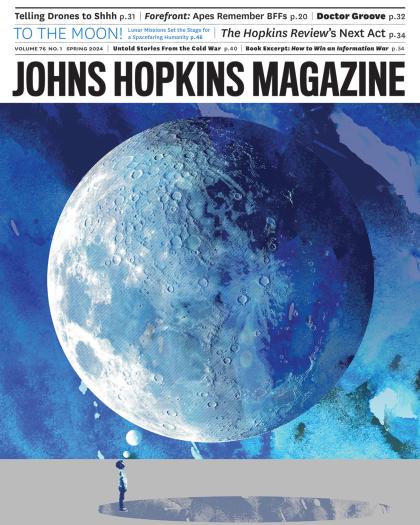Emily Gaines Buchler ("A Bigger, Bolder Moon Shot") is a senior writer at Johns Hopkins University, where she reports on the broad research happening across the institution's nine schools—and never gets bored.
Daniel Fishel ("Apes Remember Old Friends," illustration) is an illustrator, animator, and educator living in Philadelphia. Fishel has worked for clients such as The Washington Post, The New York Times, Target, Audible, Scholastic, and HarperCollins.
Adam Hadhazy ("Apes Remember Old Friends") is a science writer whose work has appeared in popular science and research university publications. Living in New Jersey but originally from Maryland, he enjoys blue crabs crusted in Old Bay, adventuring with his family, and finding neat bugs in the woods.
Mark Lucien Harris ("Back in the USSR," illustration) has created work for The Atlantic, Harvard Business Review, Politico, The Guardian, and, recently, the cover of The New York Times Magazine. The Philadelphia-based artist's work is inspired by past design movements including Bauhaus and Dada.
Aleyna Rentz ("A Literary Revival") is a writer whose fiction and poetry have appeared in publications including Pushcart Prize XLVII: Best of the Small Presses, The Cincinnati Review, The Iowa Review, Rattle, and elsewhere. She is a communications specialist at Johns Hopkins University.
Mark Smith ("A Literary Revival," illustration) has been featured in magazines, newspapers, books, and advertising campaigns around the world. He has won awards from the New York Society of Illustrators, American Illustration, 3X3 magazine, and more.
On the cover

Image credit: Gary Neill







